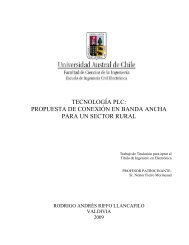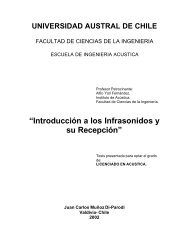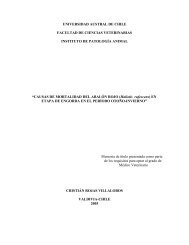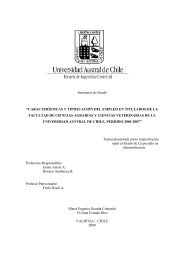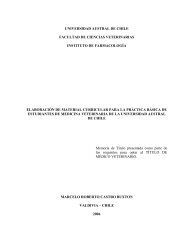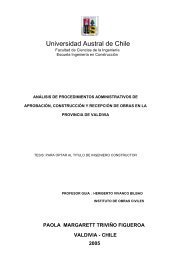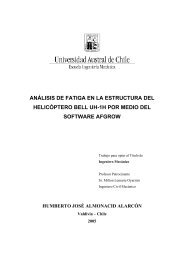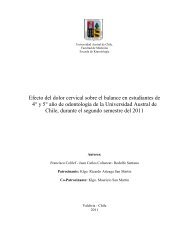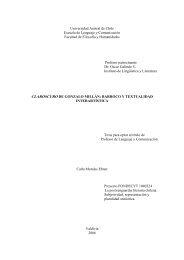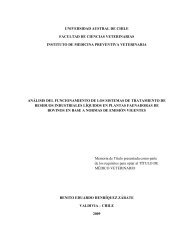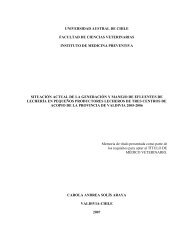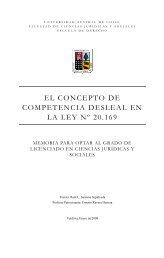sistema show control - Tesis Electrónicas UACh - Universidad ...
sistema show control - Tesis Electrónicas UACh - Universidad ...
sistema show control - Tesis Electrónicas UACh - Universidad ...
Create successful ePaper yourself
Turn your PDF publications into a flip-book with our unique Google optimized e-Paper software.
and less complex than in comprehensive equipment. Data are transmitted in the order of most<br />
generic information first, with null character delimiters between each group of data bytes in order<br />
to signify the sending of progressively less generic data. For instance, simple Controlled Devices<br />
may look only at the basic data and discard the rest.<br />
As an example, a complex Controlled Device may be able to process cue numbers with a large<br />
number of decimal point delineated subsections i.e. "235.32.7.8.654" If a Controller transmits<br />
this cue number to a simple Controlled Device that can only process numbers in the form<br />
"xxx.x", then the simple Device can either ignore these data or else respond to them in a<br />
predictable manner, such as processing cue number "235.3."<br />
As a further example, cue number data may be transmitted calling up cue 235.3 then followed by<br />
a delimiter and data specifying cue list 36.6 and followed by a further delimiter specifying cue<br />
path 59. If the Device supports multiple cue lists but not multiple cue paths, it would process cue<br />
235.3 in cue list 36.6 (or 36) and ignore the cue path data, simply using the current or default cue<br />
path.<br />
Looking at the situation in the opposite manner, if simple cue number data were transmitted to a<br />
Device capable of processing all cue data, it would respond by processing that cue number in the<br />
current or default cue list using the current or default cue path.<br />
3. STANDARD SPECIFICATIONS<br />
Since data often contain some form of Cue Number designation, a "Standard" specification for<br />
transmission of Cue Number and related data provides consistency and saves space in the<br />
detailed data descriptions (Section 5).<br />
3.1. CUE NUMBERS<br />
When a Cue Number is sent as data, the following additional information fields may or may not<br />
be included as part of a complete "Cue Number" description: Q_list and Q_path. Q_list<br />
prescribes in which one of all currently Open Cue Lists the Q_number is to be placed or<br />
manipulated. Q_path prescribes from which Open Cue Path within all available cue storage<br />
media the Q_number is to be retrieved. The data include these information fields in the following<br />
order:<br />
00 00 F7<br />
Between each separate field a delimiter byte of the value 00H is placed as <strong>show</strong>n to indicate the<br />
end of the previous field and beginning of the next. It is acceptable to send only:<br />
F7<br />
or<br />
00 F7.<br />
Controlled Devices should be able to accept more than one set of delimiter bytes, including<br />
directly before F7H, and even if no Q_number, Q_list or Q_path data are sent. Data are always<br />
terminated by F7H.<br />
Q_number, Q_list and Q_path are expressed as ASCII numbers 0-9 (encoded as 30H-39H) with<br />
the ASCII decimal point character (2EH) used to delineate subsections. In the example above,<br />
cue 235.6 list 36.6 path 59 would be represented by the hex data:<br />
32 33 35 2E 36 00 33 36 2E 36 00 35 39 F7<br />
A3-5



